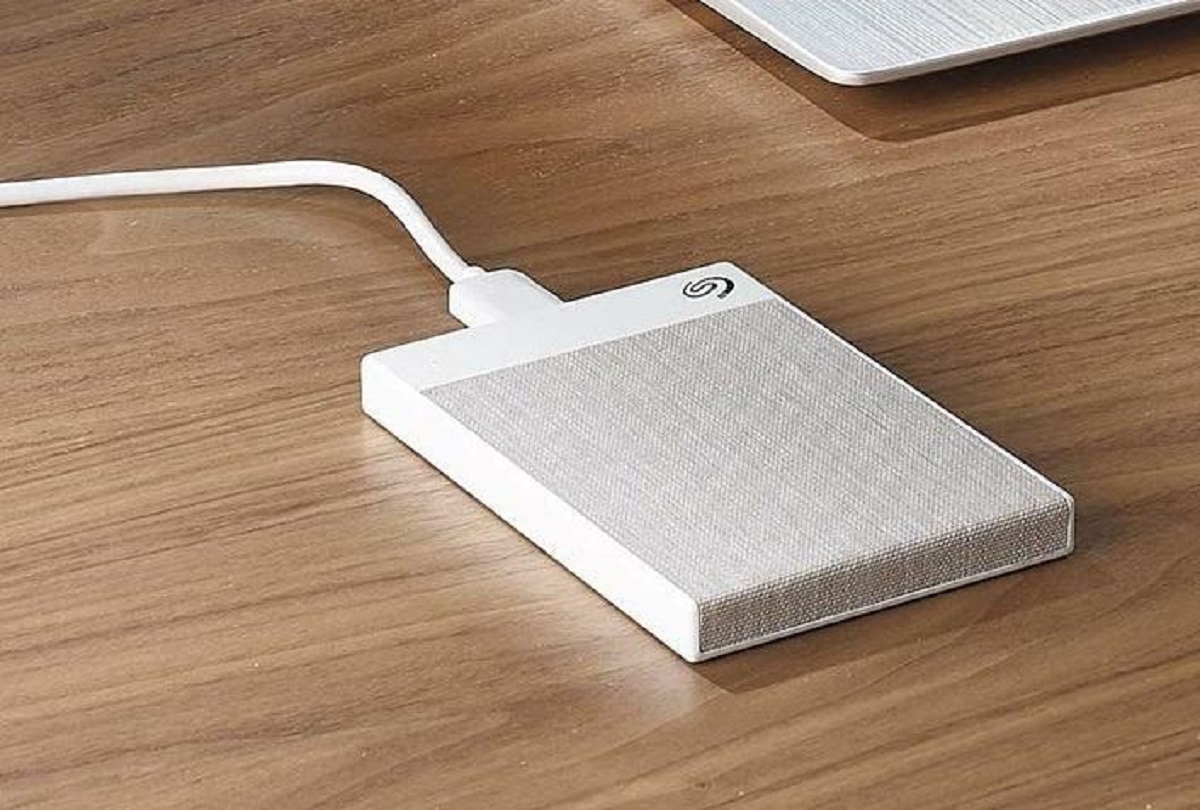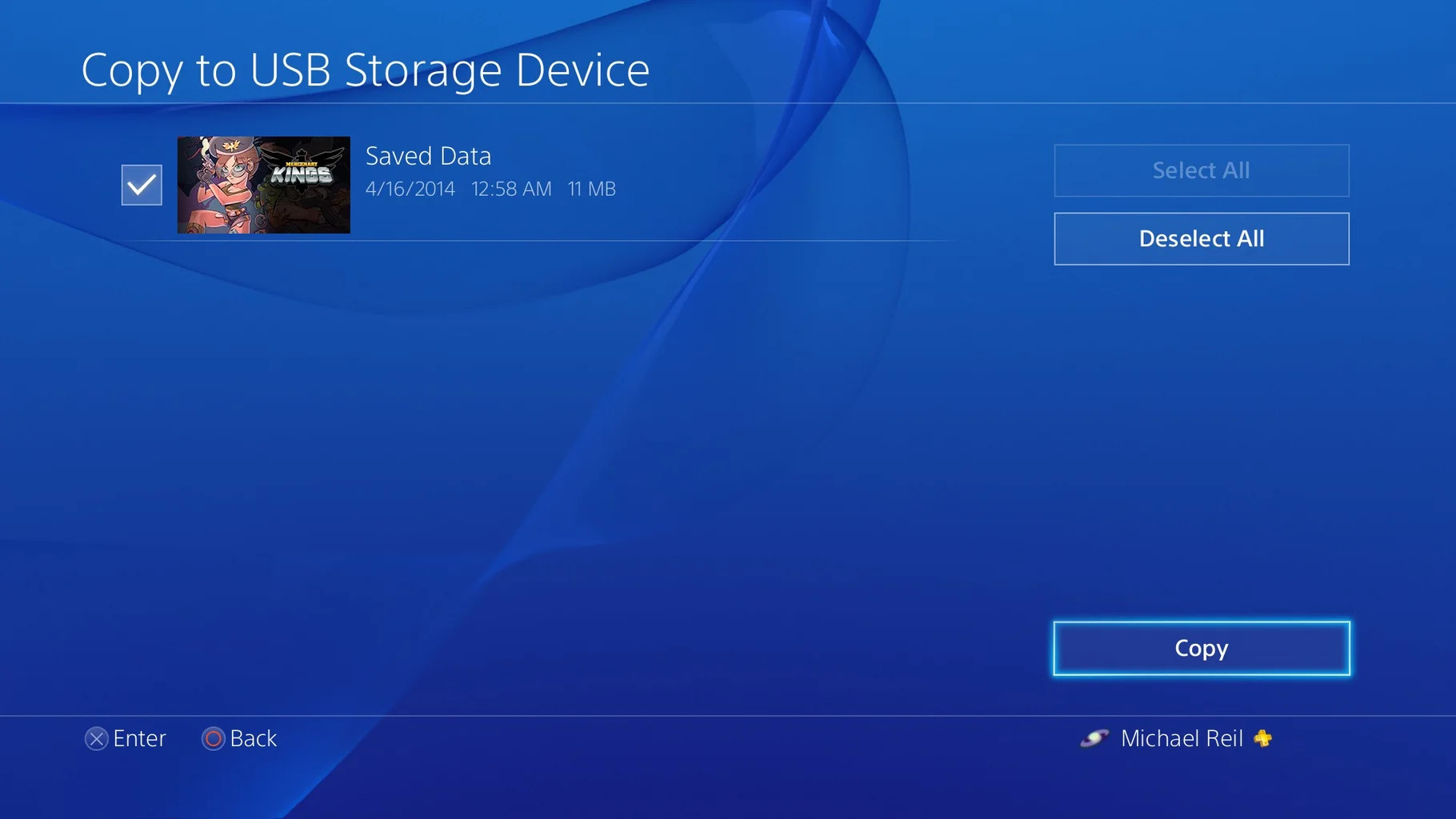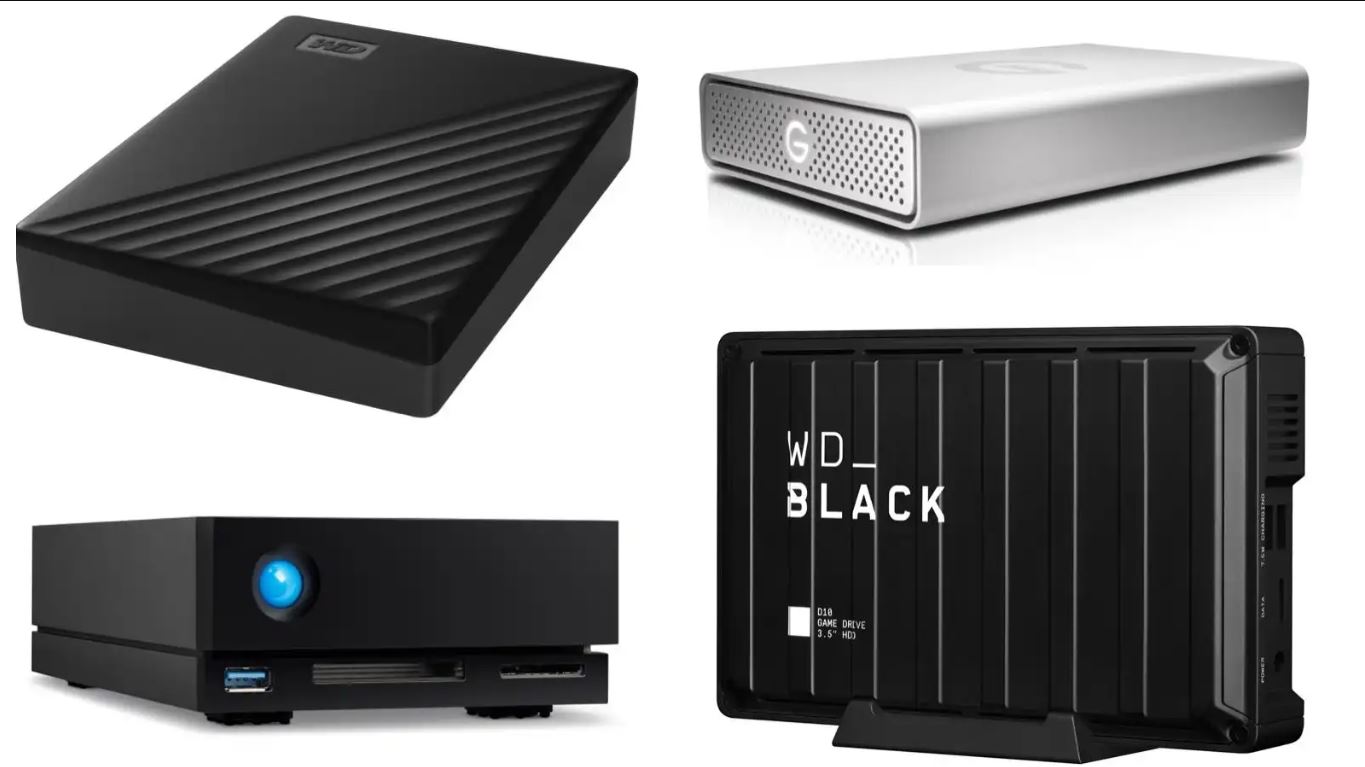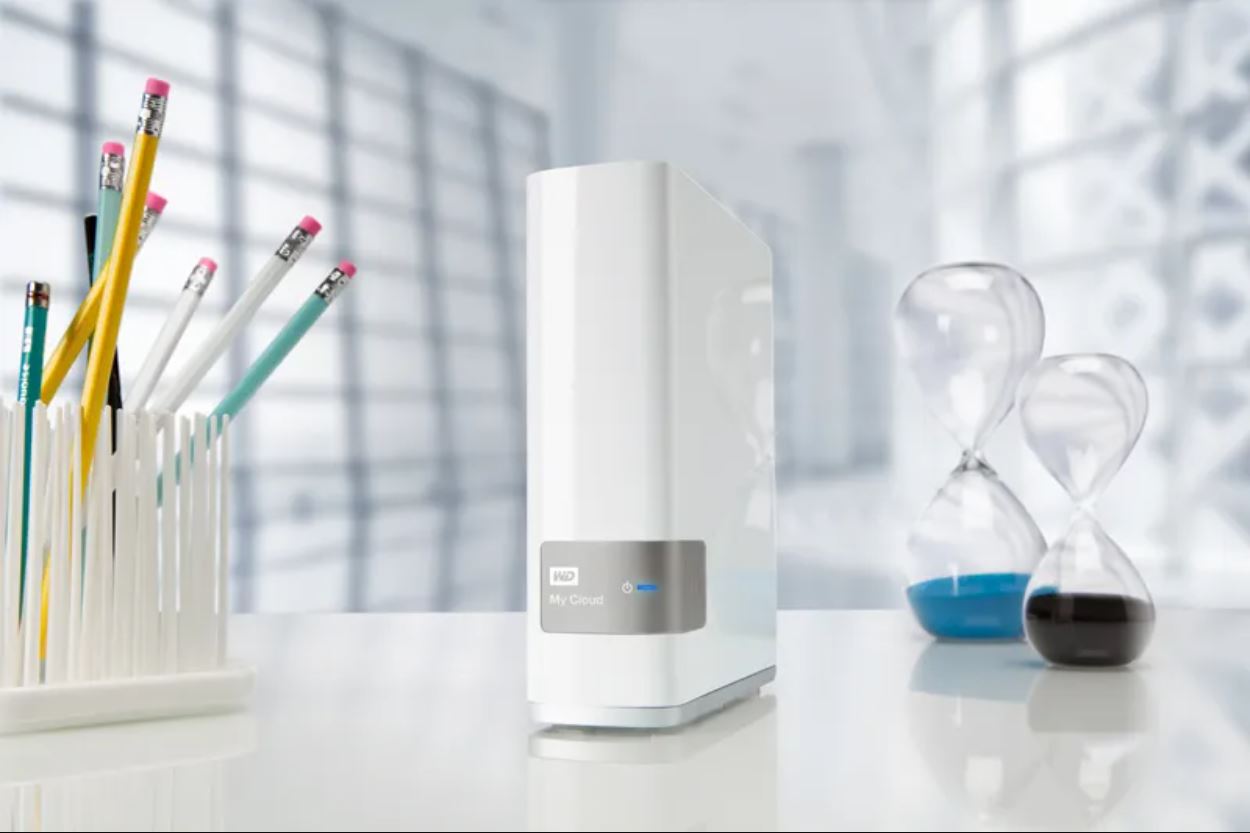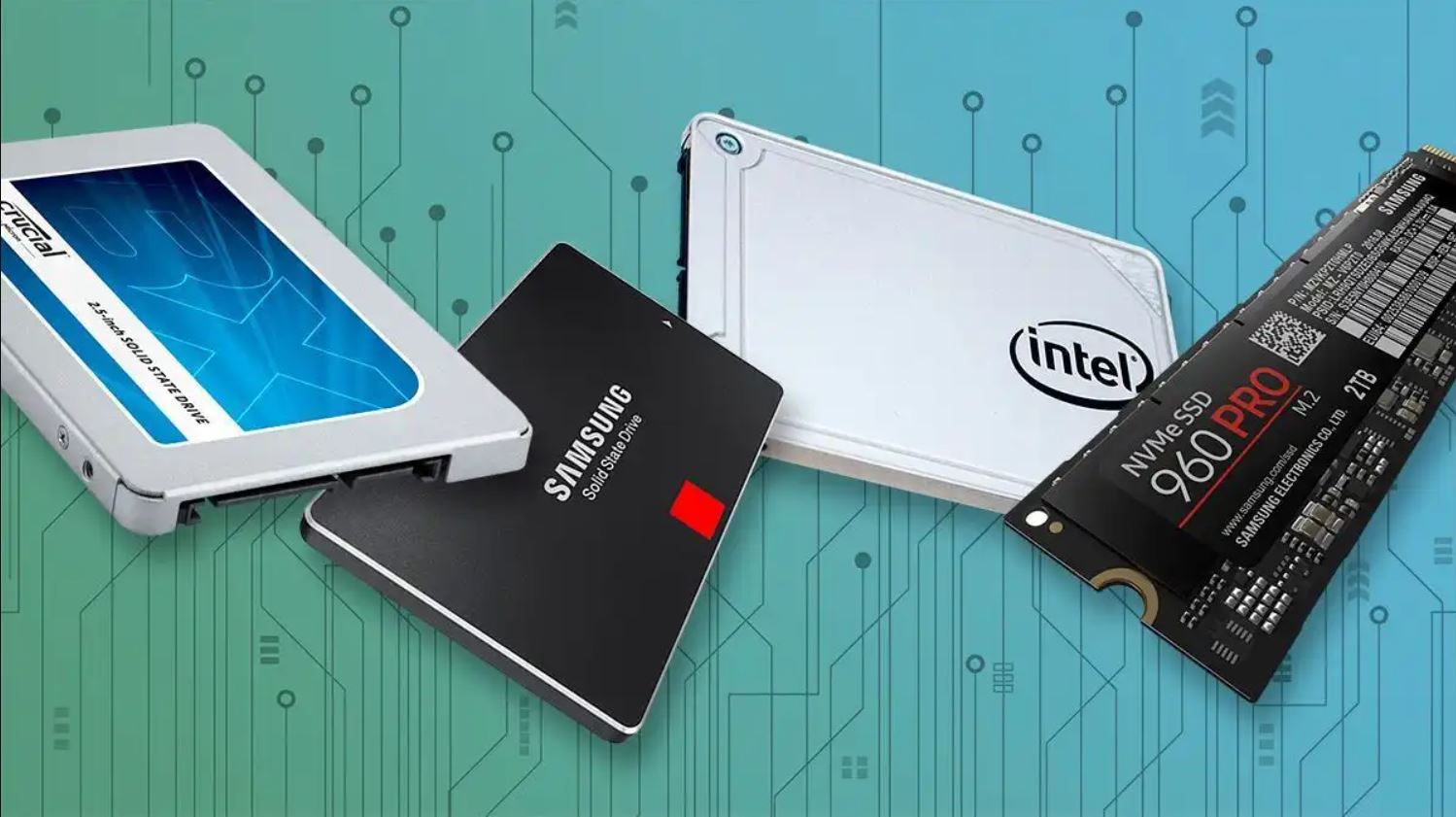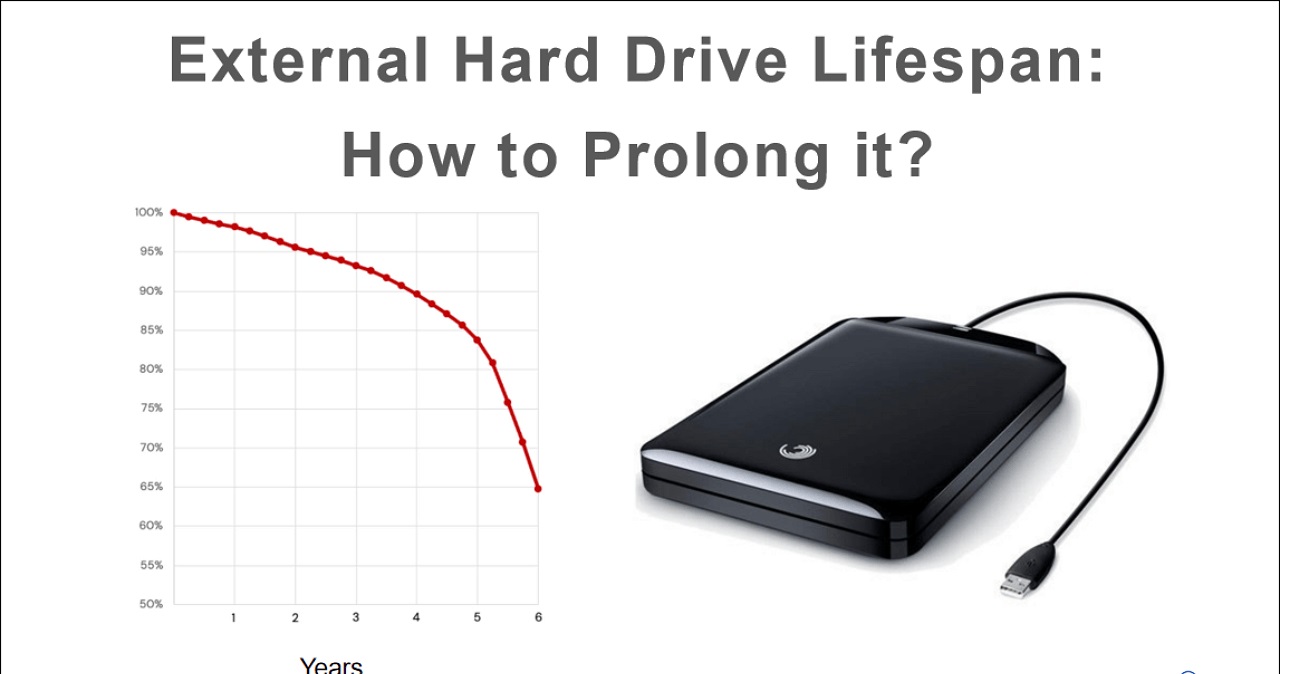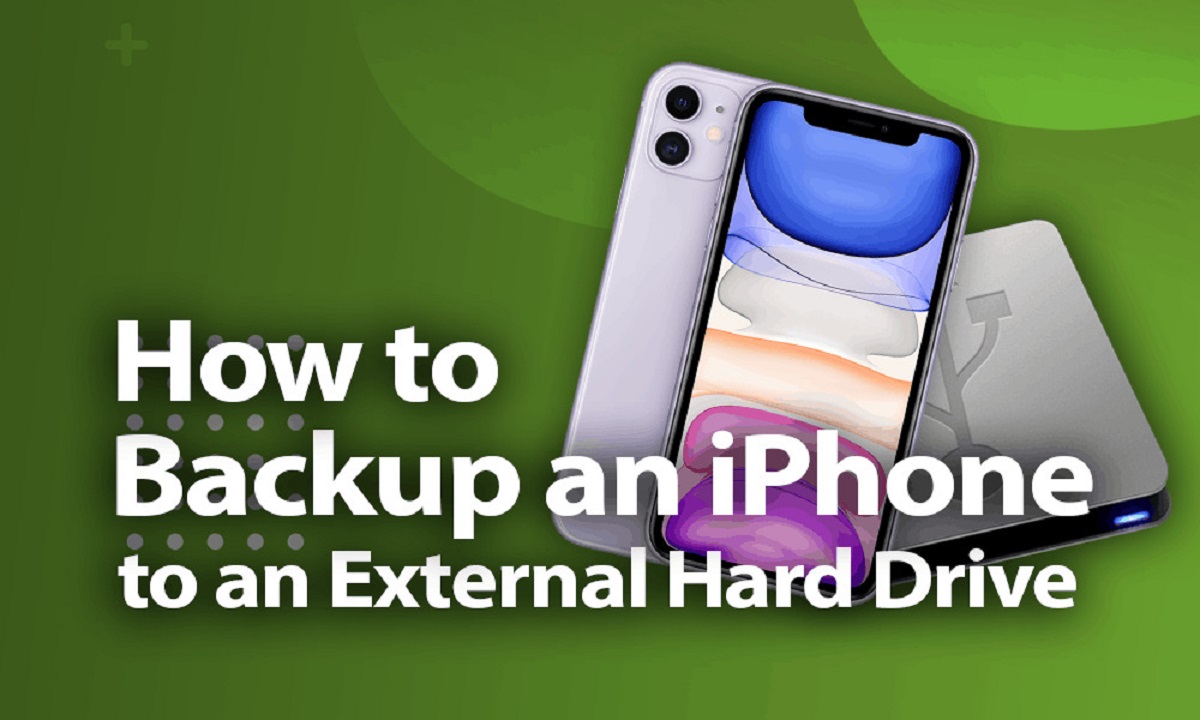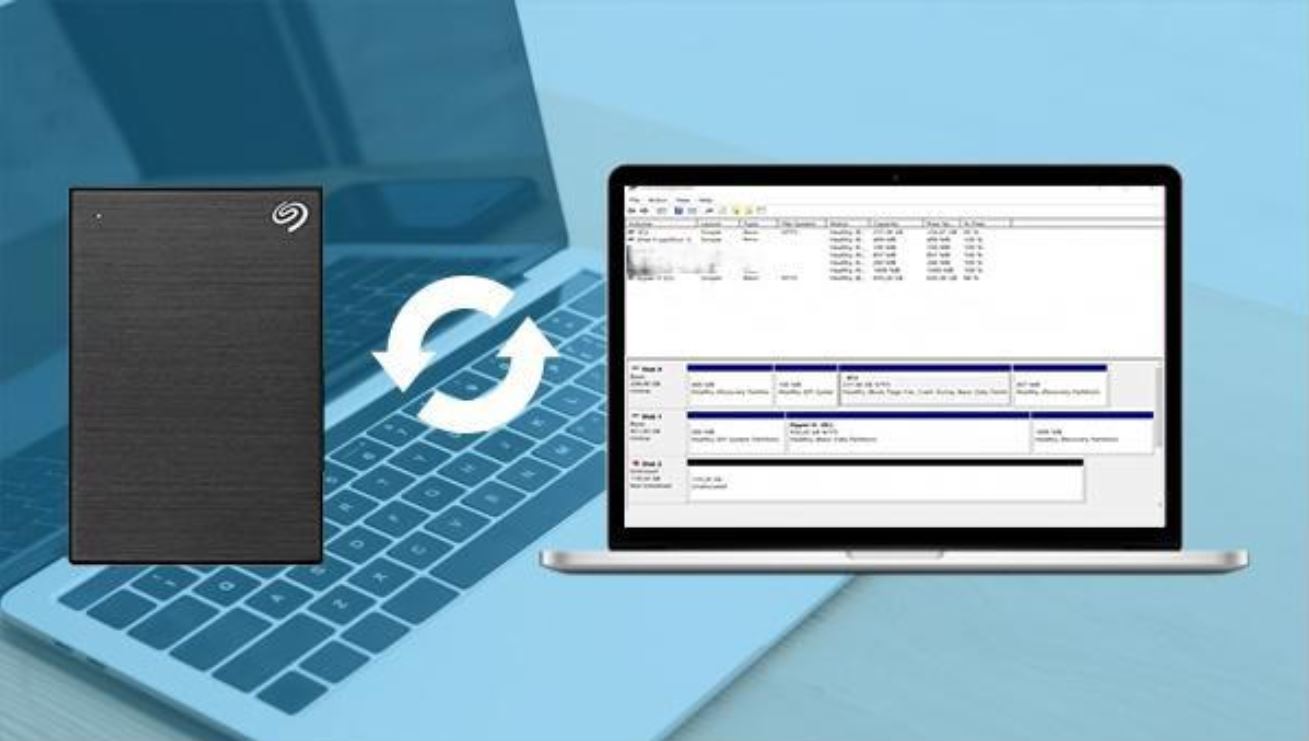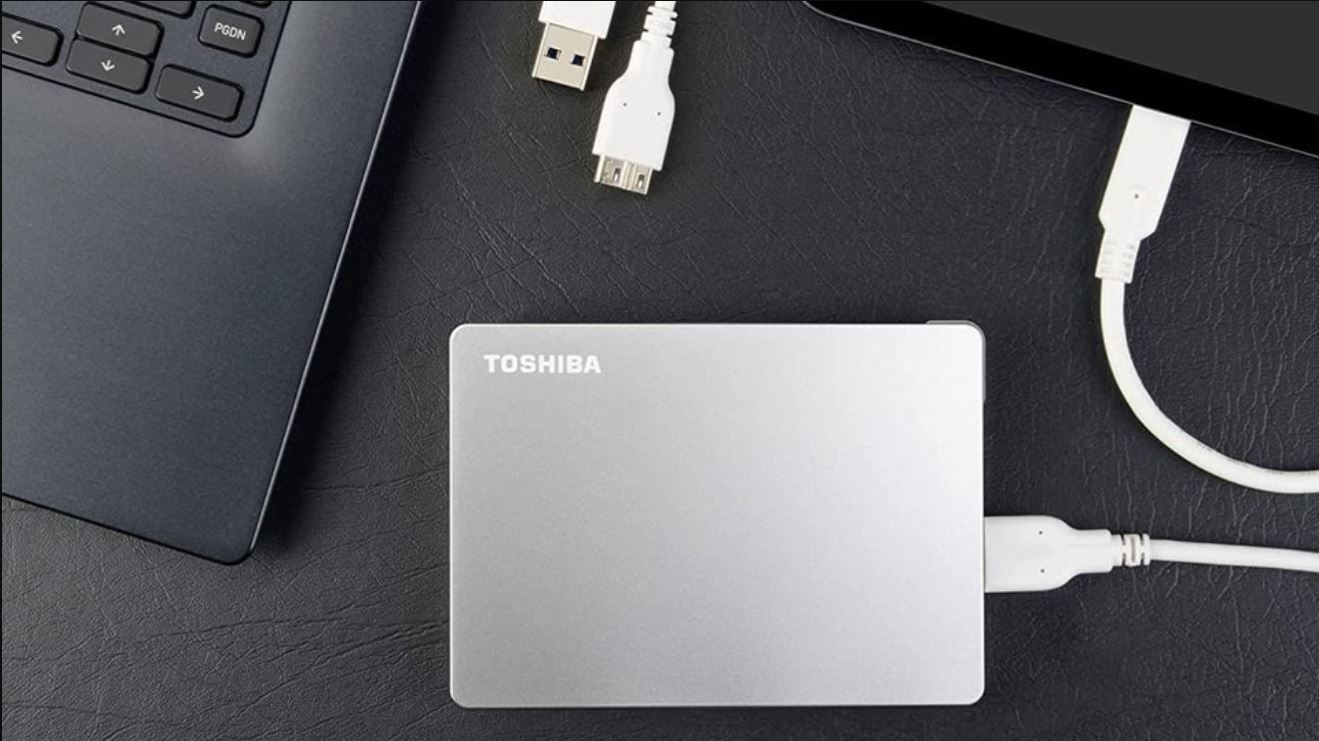Introduction
Welcome to the world of external hard drives! If you’re on the hunt for a reliable and efficient storage solution, you’ve come to the right place. In this article, we’ll explore the ins and outs of external hard drives, looking at what they are, why you need one, and the key factors to consider when choosing the right one for your needs.
An external hard drive is a portable device that connects to your computer or other digital devices to provide additional storage space. It is an ideal solution for those looking to expand the capacity of their laptops, desktops, or gaming consoles, and also offers a convenient way to back up important files and secure sensitive data.
So why do you need an external hard drive? The answer is simple – storage space. With the increasing amount of digital content we generate and consume, such as high-resolution photos, videos, and large software applications, internal storage on our devices often falls short. An external hard drive offers an easy and cost-effective way to extend storage capacity, ensuring you never have to worry about running out of space again.
When choosing the right external hard drive for your needs, there are several factors to consider. Firstly, storage capacity is crucial. Whether you’re a casual user or a professional, it’s essential to have enough space to accommodate your files and applications. Look for drives with capacities ranging from a few hundred gigabytes to multiple terabytes, depending on your requirements.
Connectivity options are another important consideration. Most external hard drives offer USB connections, with USB 3.0 or USB-C being the fastest and most common options. Additionally, some drives may provide Thunderbolt or eSATA ports for even faster data transfer speeds.
Speed and performance are vital, especially if you plan on transferring large files or running applications directly from the external hard drive. Look for drives with a high rotational speed (RPM) or solid-state drives (SSD) for faster data access times and improved performance.
Portability and durability are also crucial factors to consider, especially if you plan on using your external hard drive on the go. Look for drives that are compact, lightweight, and feature rugged designs or shock-resistant features to withstand accidental drops or bumps.
Backup and security features are essential to safeguard your data. Look for drives that offer automatic backup software or hardware encryption options to protect your files from loss or unauthorized access.
Compatibility with different devices and operating systems is crucial. Ensure that the drive supports your device, whether it’s a Windows computer, Mac, or even a gaming console. Cross-platform compatibility is beneficial if you plan on using the drive across multiple devices.
Price and value for money is always a consideration. Compare the features, specifications, and price of different external hard drives to find the one that offers the best combination of performance and affordability within your budget.
In the following sections of this article, we’ll delve deeper into each of these factors, exploring some popular brands and models of external hard drives. By the end, you’ll be armed with the knowledge to make an informed decision and choose the perfect external hard drive that meets your storage needs.
What is an External Hard Drive?
An external hard drive is a portable device that provides additional storage space and connects to your computer or other digital devices. It is designed to supplement the internal storage of your device, offering a convenient and reliable solution for storing and accessing your files.
Unlike internal hard drives that are housed within your computer or device, external hard drives are standalone units that can be easily connected or disconnected as needed. They typically come in various sizes and capacities, ranging from a few hundred gigabytes to multiple terabytes, allowing you to choose the one that best suits your storage requirements.
External hard drives are commonly used to store a wide range of digital files, including documents, photos, videos, music, and software applications. They offer a practical solution for individuals and professionals who deal with large amounts of data and require additional space beyond what their devices can provide.
One of the key advantages of an external hard drive is the flexibility it provides. You can easily carry it with you and connect it to different devices, such as laptops, desktops, gaming consoles, or even smart TVs. This allows you to access your files on multiple devices without the need for internet connectivity or cloud storage.
In addition to expanding storage capacity, external hard drives are also commonly used for data backup purposes. They offer a simple and effective way to create backups of important files and protect against data loss. By regularly backing up your data to an external hard drive, you can safeguard your valuable files in case of a system failure, malware attack, or accidental deletion.
External hard drives come with various connectivity options, with USB being the most common. USB 3.0 and USB-C are the fastest and most widely used standards, offering rapid data transfer speeds between the drive and the connected device. Some external hard drives may also offer additional connectivity options such as Thunderbolt or eSATA, providing even faster speeds for data-intensive tasks.
Overall, an external hard drive is a versatile and practical storage solution that offers additional space, data backup capabilities, and portability. It is an essential accessory for individuals and professionals who require extra storage for their digital content and want the convenience of easily accessing their files across multiple devices.
Why do you need an External Hard Drive?
An external hard drive is not just a luxury; it has become a necessity in today’s digital world. Here are several reasons why you might need an external hard drive:
1. Additional Storage Space: As technology advances, the size of files we create and consume continues to grow. Whether it’s large media files like high-resolution photos and videos or resource-intensive software applications, internal storage on our devices can quickly fill up. An external hard drive provides an affordable and easy way to expand your storage capacity and keep all your files easily accessible in one place.
2. Data Backup and Protection: Data loss can be disastrous, especially if you don’t have a backup. An external hard drive allows you to create regular backups of your important files and folders. By copying your data to an external drive, you can protect against accidental deletions, hardware failures, or malware attacks. It provides peace of mind, knowing that your valuable files are safe and secure.
3. Portability and Accessibility: With an external hard drive, you can take your files on the go. It enables you to carry large amounts of data, such as work documents, media libraries, or project files, wherever you need them. Whether you’re traveling, attending meetings, or working from different locations, having your important files stored on an external drive ensures you always have access to your data without relying on an internet connection.
4. File Organization and Management: An external hard drive allows you to organize your files in a way that suits your needs. You can create folders, subfolders, and hierarchies to keep your files neatly organized and easily accessible. This can greatly streamline your workflow and reduce the time spent searching for specific documents or media files.
5. Separate Storage for Multimedia: If you are a creative professional or a multimedia enthusiast, you might have a vast collection of photos, videos, or music. Storing these large files on your laptop or computer’s internal drive can quickly consume space and potentially slow down your system. By offloading your multimedia files to an external hard drive, you can free up internal storage and ensure smooth performance for your device.
6. Device Upgrades and Transfers: When upgrading to a new device or transferring data from an old one, an external hard drive can be invaluable. You can easily transfer your files, settings, and applications from one device to another using your external drive as an intermediary storage device. This makes the transition to a new device seamless and hassle-free.
7. Collaboration and Sharing: With an external hard drive, you can share files and collaborate with others easily. You can transfer large files or folders to colleagues, friends, or family members without the limitations of email attachments or cloud storage restrictions. This makes it convenient for collaborative projects, sharing media files, or distributing content to multiple recipients.
In summary, an external hard drive is a versatile and indispensable tool that provides additional storage space, data backup capabilities, file organization, and portability. Whether you’re managing large amounts of data, safeguarding important files, or enabling easy sharing and collaboration, an external hard drive is a reliable and practical solution.
Factors to Consider when Choosing an External Hard Drive
Choosing the right external hard drive can be a daunting task with the multitude of options available. To help you make an informed decision, here are several important factors to consider:
1. Storage Capacity: The storage capacity of an external hard drive is a crucial factor to consider. Evaluate your storage needs and choose a drive that offers sufficient space to accommodate your files and future growth. Consider factors such as the size of your media libraries, the amount of data you generate, and the type of files you work with. Keep in mind that high-resolution photos, videos, and large software applications can quickly consume space.
2. Connectivity Options: External hard drives typically connect to your computer or device using USB ports. USB 3.0 and USB-C are the most common and fastest options available, providing rapid data transfer speeds. Ensure that the drive you choose offers a compatible connection with your device. Consider additional connectivity options such as Thunderbolt or eSATA if you require even faster transfer speeds.
3. Speed and Performance: If you frequently transfer large files or work with resource-intensive applications, the speed and performance of the external hard drive are important considerations. Look for drives with higher rotational speeds (RPM) or solid-state drives (SSD), as they offer faster data access times and improved performance. This can drastically reduce file transfer times and enhance overall system responsiveness.
4. Portability and Durability: If you plan on using your external hard drive on the go, consider its portability and durability. Look for drives that are compact, lightweight, and easy to carry. Rugged designs or shock-resistant features can protect the drive from accidental drops or bumps. A portable and durable external hard drive ensures that your data remains safe even in demanding environments.
5. Backup and Security Features: Data backup and security features are crucial to protect your files. Look for drives that offer built-in backup software or hardware encryption options. Automatic backup software can streamline the backup process, ensuring that your data is regularly and securely backed up. Hardware encryption adds an extra layer of protection, safeguarding your files from unauthorized access.
6. Compatibility: Ensure that the external hard drive you choose is compatible with your device and operating system. Most drives are compatible with both Windows and Mac computers. However, if you plan to use the drive with a gaming console, smart TV, or other devices, ensure that it supports the required file system and compatibility standards.
7. Price and Value for Money: Consider your budget and compare the features, specifications, and prices of different external hard drives. Look for the best balance of performance and affordability that meets your storage needs. Remember to consider the long-term value that the drive offers, such as reliability, warranty, and customer support.
By considering these factors, you can make an informed decision and choose the external hard drive that best suits your storage requirements. Take the time to assess your needs, evaluate the available options, and prioritize the factors that are most important to you.
Storage Capacity
When choosing an external hard drive, one of the key factors to consider is the storage capacity. The storage capacity of a drive refers to the amount of digital data it can hold. It is essential to choose a drive with sufficient space to accommodate your current files and future needs.
The storage capacity of external hard drives can vary significantly, ranging from a few hundred gigabytes (GB) to multiple terabytes (TB). The right capacity for you depends on your specific requirements, such as the type and size of files you work with.
If you are a casual user who primarily deals with documents, spreadsheets, and basic media files, a drive with a capacity of 500GB to 1TB may be sufficient. However, if you work with high-resolution photos, videos, or large software applications, you may need a drive with a higher capacity, such as 2TB or more.
It’s important to consider not only your current storage needs but also future growth. As technology advances and file sizes increase, your storage requirements will likely grow over time. Investing in a larger capacity drive can offer peace of mind and save you from the hassle of having to upgrade in the near future.
Additionally, consider the longevity of the drive. If you plan to archive files or store large media libraries, a higher capacity drive ensures that you have enough space to accommodate expanding collections without constantly needing to free up space.
Keep in mind that the actual available storage capacity may be slightly less than the advertised capacity due to formatting and system requirements. For example, a 1TB drive may only offer around 900GB of usable space. It’s always recommended to check the manufacturer’s specifications to understand the actual usable capacity of the drive.
Lastly, consider the costs associated with higher capacity drives. As the storage capacity increases, the price of the external hard drive typically goes up. It’s essential to strike a balance between your budget and your storage needs. Evaluate the importance of having ample storage space versus the cost of the drive. It’s also worth comparing prices among different brands and models to find the best value for money.
In summary, when considering storage capacity for an external hard drive, assess your current and future storage needs, the type of files you work with, and your budget. Choose a drive with a capacity that allows for growth and accommodates your files comfortably. By selecting the appropriate storage capacity, you can ensure that your external hard drive provides ample space to store and manage your digital content effectively.
Connectivity Options
Connectivity options are an important consideration when choosing an external hard drive. The right connectivity ensures seamless and fast data transfer between the drive and your computer or other devices. Here are some key connectivity options to consider:
1. USB: The most common and widely supported connectivity option for external hard drives is USB (Universal Serial Bus). USB 3.0 and USB-C are the latest standards, offering faster data transfer speeds compared to older USB 2.0. USB 3.0 provides data transfer rates of up to 5 Gbps, while USB-C offers faster speeds and reversible connectors for easier insertion.
2. Thunderbolt: Thunderbolt is a high-speed connectivity option found on some external hard drives. It provides ultra-fast data transfer speeds, making it ideal for professionals who work with large files or require quick access to their data. Thunderbolt 3 offers data transfer rates of up to 40 Gbps, allowing for lightning-fast file transfers and daisy-chaining multiple devices.
3. eSATA: eSATA (external Serial Advanced Technology Attachment) is another connectivity option available on some external hard drives. It offers faster data transfer speeds compared to USB, making it suitable for data-intensive tasks. However, eSATA is less common on modern devices, and compatibility may be limited to certain computers or systems with eSATA ports.
4. Wireless Connectivity: Some external hard drives offer wireless connectivity options, such as Wi-Fi or Bluetooth. Wireless drives allow you to connect and access your files without the need for physical cables or direct connections. They can be handy for mobile devices or situations where you want to access your files from multiple devices without the hassle of cables.
When considering connectivity options, it’s important to assess your needs and the devices you intend to connect the external hard drive to. If you primarily use a desktop or laptop computer, USB connectivity is a reliable and versatile option. USB is widely supported on various devices and operating systems, ensuring compatibility across different platforms.
For professionals or power users who require fast data transfer speeds and have devices with Thunderbolt ports, opting for an external hard drive with Thunderbolt connectivity can provide optimal performance. Thunderbolt offers unparalleled speeds and is commonly used in industries such as video editing, graphic design, and data-intensive applications.
In addition to the connectivity option, consider the cables and ports available on your device. Ensure that your device has the necessary ports to connect the external hard drive without the need for adapters or additional accessories. Also, check whether the external hard drive comes with the required cables or if you need to purchase them separately.
Ultimately, the right connectivity option for your external hard drive depends on your specific requirements and the devices you plan to connect it to. Evaluate your needs, consider the compatibility of your devices, and choose a drive that offers the most suitable connectivity option to ensure seamless and efficient file transfers.
Speed and Performance
When selecting an external hard drive, speed and performance are crucial factors to consider. The speed of the drive determines how quickly you can transfer files, access data, and perform tasks that involve reading or writing data. Here are some key considerations for speed and performance:
1. Rotational Speed or Solid-State Drive: Traditional external hard drives feature spinning disks and are commonly referred to as HDDs (Hard Disk Drives). The rotational speed of an HDD is measured in revolutions per minute (RPM). Drives with higher RPM tend to offer faster data access times and improved performance. For tasks that involve large file transfers or running applications directly from the external hard drive, consider choosing a drive with a higher rotational speed.
On the other hand, solid-state drives (SSDs) are a newer type of storage technology that do not have any moving parts. SSDs offer faster data transfer rates and significantly faster access times compared to HDDs. They are more durable, consume less power, and produce less heat. If speed and performance are a priority, consider opting for an external hard drive with an SSD, even though it may come at a higher cost.
2. Data Transfer Speed: The speed at which you can transfer files between your computer and the external hard drive is influenced by the connectivity options available. USB is the most common connectivity option and offers different versions with varying data transfer speeds. USB 3.0 and USB-C provide faster transfer speeds compared to the older USB 2.0 standard. Look for drives that support USB 3.0 or USB-C for faster data transfers, especially if you frequently move large files or perform data-intensive tasks.
3. Buffer Size and Cache: External hard drives often come with a built-in buffer or cache, which serves as temporary storage for data being read from or written to the drive. A larger buffer size or cache can help improve performance, as it allows for smoother and faster data transfers. When comparing different drives, consider the size of the buffer or cache and how it will impact the speed and performance of the drive during file transfers or data-intensive tasks.
4. File System: The file system used on the external hard drive can also impact speed and performance. Different operating systems (such as Windows, macOS, or Linux) use different file systems. Some file systems, like NTFS (used in Windows) or APFS (used in macOS), offer better performance and support larger file sizes. Be aware of the file system supported by your external hard drive and ensure it is compatible with your device’s operating system for optimal performance.
5. Application Performance: If you plan to run applications directly from the external hard drive, pay attention to speed and performance. SSD-based external drives typically offer better performance for running applications compared to HDDs. Consider the nature of the applications you want to use and determine whether the drive’s speed will meet your requirements for smooth application performance.
When considering speed and performance, it’s important to align your needs with the capabilities of the external hard drive. If you primarily deal with large files, perform data-intensive tasks, or require seamless application performance, investing in drives with faster rotational speeds, SSD technology, or higher data transfer speeds will yield noticeable improvements in speed and overall performance.
Ultimately, choose an external hard drive that offers the right combination of speed, performance, and storage capacity to meet your specific requirements and enhance your productivity and user experience.
Portability and Durability
When selecting an external hard drive, considering its portability and durability is essential, especially if you plan on using it on the go or in demanding environments. Here are key factors to consider:
1. Size and Weight: A portable external hard drive should be compact and lightweight, making it easy to carry and transport. Compact drives are ideal for frequent travelers or individuals who need to take their data with them wherever they go. Consider the physical dimensions and weight of the drive to ensure it fits your needs and lifestyle.
2. Rugged Design: If you anticipate rough handling or potential accidents, look for external hard drives with a rugged design. Rugged drives are built to withstand shock, vibrations, drops, and other physical impacts, protecting the drive and your data even in challenging conditions. These drives usually come with shock-resistant features or protective casings to minimize damage from accidental drops or bumps.
3. Protection Against Elements: Consider the level of protection the external hard drive provides against dust, water, and other elements. Some drives are designed to be dust- or water-resistant, safeguarding your data from potential damage caused by environmental factors. If you often find yourself using the external hard drive in outdoor or unpredictable environments, opt for a drive with a higher IP (Ingress Protection) rating for added protection.
4. Heat Dissipation: External hard drives can generate some heat during prolonged use. Look for drives with efficient heat dissipation capabilities that prevent the drive from overheating. Adequate heat dissipation ensures optimal performance and prolongs the lifespan of the drive. Drives with built-in cooling features like aluminum cases or thermal sensors help to regulate and dissipate heat effectively.
5. Connection Interface: Consider the design and accessibility of the connection interface on the external hard drive. Ensure that the ports and cables are designed to be user-friendly and durable. Some drives have retractable or concealed cables, which can be more convenient for travel and reduce the risk of cable damage.
6. Power Source: For true portability, choose an external hard drive that doesn’t require an external power source. These drives are commonly referred to as bus-powered or self-powered drives, and they draw power directly from the device they are connected to via the USB or Thunderbolt port. Self-powered drives eliminate the need for carrying an additional power adapter, making them more convenient for on-the-go use.
7. Warranty and Support: When assessing the durability of an external hard drive, consider the warranty and customer support provided by the manufacturer. A longer warranty period provides peace of mind, and responsive customer support ensures that any issues or concerns are addressed promptly. Research reviews and feedback from other users to gain insight into the customer service and reliability of the manufacturer.
By choosing a portable and durable external hard drive, you can confidently take your data anywhere without worrying about accidental damage or loss. Evaluate your needs and consider the specific environments in which you plan to use the drive to find the one that offers the right level of portability and durability for your use case.
Backup and Security Features
When selecting an external hard drive, considering its backup and security features is essential to ensure the safety and protection of your data. Here are key factors to consider:
1. Automatic Backup Software: Look for external hard drives that come with built-in automatic backup software. This feature allows you to schedule regular backups of your files and folders without manual intervention. Automatic backups provide an extra layer of protection by ensuring that your data is consistently backed up and up to date.
2. Hardware Encryption: If you handle sensitive data, opt for an external hard drive with hardware encryption capabilities. Hardware encryption secures your data by encrypting it at the physical hardware level. This protects your files from unauthorized access, even if the drive is lost or stolen. Ensure that the drive supports encryption standards, such as AES (Advanced Encryption Standard), and consider drives that offer password-based encryption for an added layer of security.
3. Drive-Level Data Redundancy: Some external hard drives offer drive-level data redundancy features. This means that the drive contains multiple physical disks or utilizes RAID (Redundant Array of Independent Disks) technology to create redundant copies of your data. In the event of a disk failure, the redundant copies ensure that your data remains intact. This adds an extra layer of data protection and peace of mind.
4. File Recovery Options: Accidental file deletion or data corruption can occur, making file recovery options a valuable feature. Some external hard drives come with software solutions that enable easy file recovery. These tools can help you retrieve deleted or lost files, minimizing the risk of permanent data loss.
5. Cloud Backup Integration: Consider an external hard drive that offers seamless integration with cloud backup services. Cloud backup provides an off-site copy of your data, protecting it from local disasters or incidents. Look for drives that support cloud backup services like Dropbox, Google Drive, or OneDrive. This allows you to configure automatic backups to both the external hard drive and the cloud, ensuring redundancy and data availability.
6. Data Synchronization: Some drives offer data synchronization capabilities, allowing you to keep your files up to date across multiple devices. With data synchronization, changes made to files on one device are automatically reflected on other devices connected to the same drive. This feature ensures that you always have access to the latest versions of your files, regardless of which device you are using.
7. Software Security Tools: In addition to hardware encryption, some external hard drives offer software security tools, such as password protection or data shredding. Password protection allows you to set a password for accessing the drive, adding an extra layer of security. Data shredding tools securely delete files beyond recovery, ensuring that sensitive information cannot be restored even if the drive falls into the wrong hands.
By carefully considering the backup and security features of an external hard drive, you can protect your data from loss, accidental deletion, or unauthorized access. Assess your specific needs, such as the sensitivity of your data and the level of security required, to choose a drive that offers the necessary backup and security features for your peace of mind.
Compatibility with Different Devices and Operating Systems
When selecting an external hard drive, compatibility with different devices and operating systems is a crucial factor to consider. Ensuring that the drive works seamlessly with your devices and operating systems allows for a hassle-free user experience. Here are key considerations for compatibility:
1. Device Compatibility: Consider the devices you plan to connect the external hard drive to. Most external hard drives are compatible with desktop and laptop computers, but it’s important to verify compatibility with specific operating systems. Whether you use Windows, macOS, or Linux, ensure that the drive is compatible with your intended devices.
2. Operating System Compatibility: Different operating systems use different file systems: Windows typically uses NTFS, macOS uses APFS (Apple File System), and Linux often uses Ext4. Check the compatibility of the external hard drive with the operating systems you plan to use it with. Some drives come pre-formatted to work with multiple operating systems, while others require reformatting to switch between platforms.
3. Cross-Platform Compatibility: If you use both Windows and macOS devices, or if you need to share the external hard drive with others who use different operating systems, opt for a drive that supports cross-platform compatibility. Drives formatted with the FAT32 or exFAT file systems can be read and written to by both Windows and macOS without the need for additional software or reformatting.
4. Gaming Console Compatibility: If you intend to use the external hard drive with a gaming console, ensure that it is compatible with the specific console you own. Some gaming consoles have specific requirements for external storage, so make sure the drive is compatible and meets the necessary specifications set by the console manufacturer.
5. Smart TV Compatibility: External hard drives can be useful for expanding storage and accessing media on smart TVs that support USB playback. Check if the drive is compatible with your smart TV model and if the file system is supported for seamless media playback. Ensure the drive provides sufficient power for your TV’s USB port or consider using an external power source if needed.
6. Mobile Device Compatibility: Some external hard drives offer compatibility with mobile devices, such as smartphones or tablets. Look for drives that are compatible with the relevant mobile operating systems (e.g., Android or iOS) and support USB or wireless connectivity options. Mobile compatibility can be useful for directly accessing files or transferring data between your mobile device and the external hard drive.
7. Additional Compatibility Considerations: Check for any additional compatibility features or requirements specific to your devices. For example, if you have a device with a USB-C port, make sure the drive supports USB-C or comes with a compatible adapter. Also, consider the power requirements of the drive and ensure compatibility with the power output of your devices.
Ensuring compatibility with your devices and operating systems is essential for a seamless and efficient experience when using an external hard drive. Verify compatibility specifications provided by the manufacturer and read user reviews or forums to gain insights from others who have tested the drive with similar devices and operating systems.
Price and Value for Money
Price is an important consideration when choosing an external hard drive, but it’s crucial to also assess the value for money that a drive offers. Here are key factors to consider when evaluating the price and value of an external hard drive:
1. Storage Capacity: The price of an external hard drive often correlates with its storage capacity. Drives with larger capacities tend to be more expensive. Evaluate your storage needs and strike a balance between the capacity you require and the price you are willing to pay. Consider future growth and whether the investment in a higher capacity drive is justified in terms of long-term value.
2. Build Quality and Durability: Higher-priced drives often come with enhanced build quality, better materials, and improved durability. These drives are designed to withstand physical stress and potential accidents. Assess your usage patterns and determine if the extra cost for a more durable drive is valuable. It’s important to find a balance between price and the level of durability needed for your specific use case.
3. Performance: Performance can vary among external hard drives, especially when it comes to speed and data transfer rates. Higher-priced drives may offer faster data access, quicker file transfers, and overall better performance due to features like solid-state drives (SSDs) or higher rotational speeds (RPM). Consider the necessity of faster performance in relation to your specific tasks and whether the price premium is worth it.
4. Backup and Security Features: More expensive drives often come with advanced backup and security features such as automatic backup software, hardware encryption, or built-in redundancy. If data protection is a top priority for you, investing in a drive with enhanced backup and security features can provide added value for the price. Assess the importance of these features based on the sensitivity and volume of your data.
5. Brand Reputation and Support: Established brands often come with a higher price tag due to their reputation, customer support, and reliability. While paying a premium for a well-known brand can provide peace of mind, it’s essential to balance reputation with the specific features and performance you require. Smaller or lesser-known brands may offer competitive options with similar features and performance at a lower price point.
6. Warranty and Customer Support: Consider the length and terms of the warranty provided by the manufacturer. Longer warranties can provide additional value as they offer protection and support in the event of drive failure or defects. Customer support is also an important aspect to consider, as responsive and reliable assistance can save time and potentially money during the lifespan of the drive.
7. Comparing Prices and Reading Reviews: Compare the prices of different external hard drives with similar specifications and features. In addition to price, read customer reviews and expert opinions to assess the value for money offered by a particular drive. Real-world experiences and feedback can help you gauge the overall quality and performance of the drive and identify any potential issues or limitations.
In summary, when evaluating the price and value for money of an external hard drive, consider factors such as storage capacity, build quality, performance, backup and security features, brand reputation, and customer support. Determine the specific features and performance requirements that align with your needs and assess whether the price premium justifies the additional value provided by the drive.
Popular Brands and Models of External Hard Drives
When it comes to external hard drives, several brands have established themselves as leaders in the market with a wide range of models offering various features and storage capacities. Here are some popular brands and models to consider:
1. Western Digital (WD): WD is a well-known brand that offers a diverse lineup of external hard drives. Their My Passport series is highly regarded, combining compactness, durability, and high storage capacities. The My Book series provides larger capacities and is suitable for desktop use.
2. Seagate: Seagate is another prominent brand known for producing reliable and high-performing external hard drives. The Backup Plus Portable and Expansion Portable models are popular choices, offering large capacities, solid performance, and sleek designs. The Backup Plus Hub series provides additional USB ports for connecting other devices.
3. Toshiba: Toshiba offers a range of external hard drives known for their affordability and reliability. The Canvio Basics series provides simple and compact drives, while the Canvio Advance series offers a more premium design and features like password protection and automatic backup software.
4. Samsung: Samsung offers external hard drives that are known for their performance and compatibility with both Windows and macOS. The Samsung T7 Touch SSD series provides high-speed data transfer with the added security of fingerprint recognition. The Samsung X5 Portable SSD series offers even faster data transfer speeds using Thunderbolt 3 connectivity.
5. G-Technology: G-Technology, a subsidiary of Western Digital, specializes in high-performance storage solutions. Their G-DRIVE series offers sleek and reliable drives with large capacities, suitable for creative professionals and those dealing with large media files.
6. Lacie: Lacie is a renowned brand favored by professionals working with creative media. Their rugged external hard drives, such as the Rugged Thunderbolt series, are built to withstand harsh conditions while providing fast transfer speeds. The d2 Professional series offers higher capacities and versatile connectivity options.
7. ADATA: ADATA is a brand known for its affordable and reliable external hard drives. Their HD710 Pro series offers rugged and shock-resistant drives, making them suitable for outdoor use. The HV300 series provides lightweight and slim options without compromising on storage capacity.
8. Transcend: Transcend offers a wide range of external hard drives with a focus on durability and performance. Their StoreJet series is known for its shock-resistant designs and military-grade drop protection. The ESD250C Portable SSD series offers high-speed data transfer through USB-C connectivity.
These are just some of the popular brands and models of external hard drives available in the market. While these brands have a strong reputation for quality and reliability, it’s important to consider your specific storage needs, budget, and any additional features required. Reading reviews and comparing specifications can help you make an informed decision and find the perfect external hard drive that suits your requirements.
Conclusion
Choosing the right external hard drive is essential for expanding your storage space, protecting your data, and enhancing your productivity. Throughout this article, we have discussed various factors to consider when selecting an external hard drive, including storage capacity, connectivity options, speed and performance, portability and durability, backup and security features, compatibility with different devices and operating systems, price and value for money, and popular brands and models.
By assessing your specific needs and prioritizing the factors that are most important to you, you can make an informed decision and find the external hard drive that best suits your requirements. Whether you need a drive with a large storage capacity for extensive media libraries, a rugged and portable drive for on-the-go use, or robust backup and security features for sensitive data, there is a wide range of options available from popular brands like Western Digital, Seagate, Toshiba, Samsung, G-Technology, Lacie, ADATA, Transcend, and more.
Remember to consider factors such as performance, compatibility, durability, and support when making your decision. Reading customer reviews and expert opinions can provide valuable insights into the real-world performance and reliability of different drives. It’s also important to consider your budget and ensure you are getting the best value for your money based on your storage needs and desired features.
Overall, an external hard drive is a valuable investment that can greatly enhance your computing experience, offer peace of mind with data backups, and provide the flexibility to store and access your files across multiple devices. By taking the time to evaluate your needs and compare the options available, you can find the perfect external hard drive that meets your storage requirements and delivers the desired performance for your digital endeavors.







